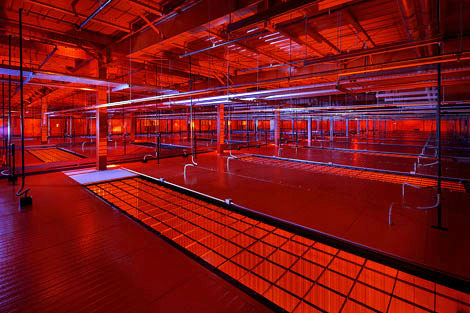Switch Backs Away from Uptime’s Tiers, Pushes Own Data Center StandardSwitch Backs Away from Uptime’s Tiers, Pushes Own Data Center Standard
Plans non-profit standards org it says will be more impartial than for-profit Uptime
June 8, 2017

Switch, the Las Vegas-based data center provider that’s been one of the more vocal users of Uptime Institute’s four-tier rating system for data center reliability, will no longer pursue certification by Uptime for the facilities it builds.
The company is proposing a new standard it calls Tier 5, which includes data center design elements other rating systems cover, as well as elements it says they lack. The “standard” is proprietary, Switch said in a statement, but the company is planning to launch a non-profit organization that will control Tier 5 and the way data center operators use it, Adam Kramer, Switch’s executive VP, said in an interview with Data Center Knowledge.
The non-profit body, which Switch expects to roll out next year, will also “vigorously defend the certification,” he said. This, according to him, addresses another problem with Uptime’s rating system – its misrepresentation by data center operators for marketing purposes, which in Kramer’s opinion is not policed aggressively enough by Uptime, a subsidiary of The 451 Group.
Finally, having a non-profit body administer the standard would ensure impartiality, he said. While Uptime is vendor-neutral, it is a commercial entity that provides tier certification as a professional service, its core revenue source. Uptime’s parent company pursues the same customers Uptime sells these services to, raising concerns of “conflict of interest and independence questions,” Switch said in a statement.
Uptime Sticks to Its Guns
Commenting on these concerns, Matt Stansberry, a senior director at Uptime, said impartiality is a big part of the value the organization provides. “We collect money for our services, but we are an unbiased, vendor-neutral organization that specifically makes our living on fairness or integrity,” he said in an interview with Data Center Knowledge.
Addressing the question of misuse of the rating system’s nomenclature by companies, Stansberry said, “I understand there are folks in the industry who misrepresent the tier certifications. We do enforce the tier policy and I think that’s one of the things, you’ll find, that we do pretty well.”
The biggest step Uptime has taken to address one type of misuse was to stop certifying design documents for colocation providers in North America before they build the facilities. The practice of certifying design docs separately from finished facilities led to some companies certifying design docs and promoting the certification without ever certifying the actual buildings.
Uptime continues to certify design docs for colocation data centers outside North America but those certifications now expire after two years.
Original Tier Rating Authors
Switch has been collaborating with some of the original authors of Uptime’s tier system on developing Tier 5, including Uptime’s former CTO, Vince Renaud, and Hank Seader, its former managing principal. They will also be involved in the future standards body, called Data Center Standards Foundation, the company said.
In a statement, Seader said the Uptime rating system was designed for enterprise data centers, and that options available to the industry have since expanded, which means the system has to adjust. He said he expected the system to evolve over time, but that has not happened. “The innovation has stagnated when it comes to evolving the facilities standard,” Seader said.
Small Portion of Switch’s Footprint Certified
While Switch has been promoting heavily its existing Tier IV Gold certifications (Uptime’s highest-level reliability rating), the portion of its total footprint that’s actually certified is relatively small. Only the opening sectors of two of its SuperNAP facilities (Las Vegas 8 and Las Vegas 9) have been certified.
The two data centers are modular, Kramer said, so the design of the initial sectors is replicated as the company adds capacity in the buildings.
These buildings are massive, together totaling 900,000 square feet, according to Kramer. Switch says on its website that its overall data center space in Las Vegas measures 2.4 million square feet and can provide up to 315MW of power. The company is getting ready to launch yet another data center in the market (Las Vegas 10) this month, Kramer said.
It also recently launched data centers outside of Reno, Nevada, and in Grand Rapids, Michigan; it entered into joint ventures to build data centers in Italy and Thailand and announced plans to build data centers in the Atlanta market.
Design is King
Switch’s overall message is that its data center design – virtually all of it attributed to the company’s founder and CEO, Rob Roy – is more reliable than the design requirements described by Uptime’s Tier IV, the highest reliability rating. The elements making it more reliable according to the company include things like the ability for the data center to “run forever without water,” detection and protection from outside air pollutants, energy storage system redundancy, availability of multiple network carriers, individual rack security, and many more. (The detailed list is here.)
Data center design and focus on physical security have played a big role in Switch's differentiation story, and the long list of differences between Tier 5 and Uptime’s Tier IV requirements highlights many of the key elements in Roy’s design and approach to security.
Read more about:
Data Center KnowledgeAbout the Author
You May Also Like






.jpg?width=700&auto=webp&quality=80&disable=upscale)
